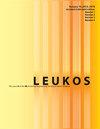窗口视图:COVID-19封锁期间的感知差异
IF 2.6
2区 工程技术
Q2 CONSTRUCTION & BUILDING TECHNOLOGY
引用次数: 14
摘要
提供日光、新鲜空气和室外景观是窗户的特征之一。但是,当窗户成为与外部物理世界联系的主要方式时,对窗户的感知又有什么不同呢?2020年上半年,许多国家采取了严格的封锁措施,以控制新冠病毒的传播。目前正在加紧研究这种禁闭的影响,以及限制人们之间的行动和社会接触。因此,本研究报告了一项全球在线调查的结果,该调查是在COVID-19爆发前后进行的,旨在确定在对窗户的感知方面是否可以观察到与封锁相关的任何显著差异。结果证实了窗户作为一种提供外部视野的方式以及与他人的视觉和社会联系的重要性的实际相关增加。相反,窗户作为天气和时间信息传递器的作用就不那么普遍了。这是首批评估在强制封锁期间对窗户感知差异的研究之一。这些发现可以帮助捕捉禁闭对人们的心理影响,并且可能在转移到其他领域时具有相关性,在这些领域中,建筑居住者可以从窗户景观的恢复效果中获益良多。本文章由计算机程序翻译,如有差异,请以英文原文为准。
Window Views: Difference of Perception during the COVID-19 Lockdown
ABSTRACT The provision of daylight, fresh air, and of a view outdoors are among the known characteristics of windows. But how does the perception of a window differ when it becomes the primary way of connecting to the physical world outside? In the first half of 2020, many countries resorted to strict lockdown measures to control the spread of the SARS-CoV-2 virus. The impact of such confinement, and the restriction to movement and social contact between people, is currently undergoing intense research. As such, this study reports the findings of a global online survey, administered before and after the COVID-19 outbreak, aimed at identifying whether any significant difference related to the lockdown could be observed in the perception of windows. The results confirm a practically relevant increase in the importance given to windows as a way to provide an external view and a visual and social connection with other people. Conversely, the role of the window as a conveyor of information on weather and time of the day was less prevalent. This is one of the first studies evaluating the difference in the perception of windows within a period of enforced lockdown. The findings can help capture the psychological impacts of confinement on people and may be relevant when transferred to other domains where building occupants could strongly benefit from the restorative effects of window views.
求助全文
通过发布文献求助,成功后即可免费获取论文全文。
去求助
来源期刊

Leukos
工程技术-光学
CiteScore
7.60
自引率
5.60%
发文量
19
审稿时长
>12 weeks
期刊介绍:
The Illuminating Engineering Society of North America and our publisher Taylor & Francis make every effort to ensure the accuracy of all the information (the "Content") contained in our publications. However, The Illuminating Engineering Society of North America and our publisher Taylor & Francis, our agents, and our licensors make no representations or warranties whatsoever as to the accuracy, completeness, or suitability for any purpose of the Content. Any opinions and views expressed in this publication are the opinions and views of the authors, and are not the views of or endorsed by The Illuminating Engineering Society of North America and our publisher Taylor & Francis. The accuracy of the Content should not be relied upon and should be independently verified with primary sources of information. The Illuminating Engineering Society of North America and our publisher Taylor & Francis shall not be liable for any losses, actions, claims, proceedings, demands, costs, expenses, damages, and other liabilities whatsoever or howsoever caused arising directly or indirectly in connection with, in relation to, or arising out of the use of the Content. Terms & Conditions of access and use can be found at http://www.tandfonline.com/page/terms-and-conditions .
 求助内容:
求助内容: 应助结果提醒方式:
应助结果提醒方式:


